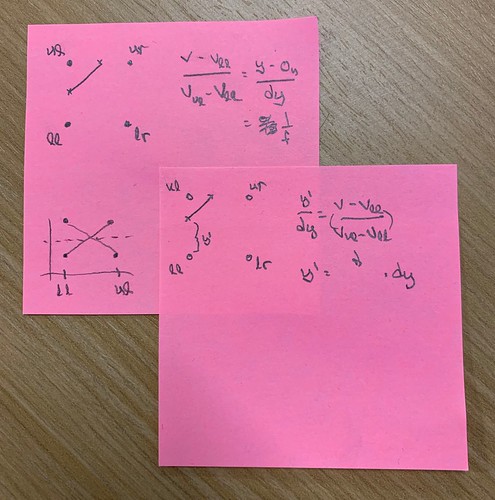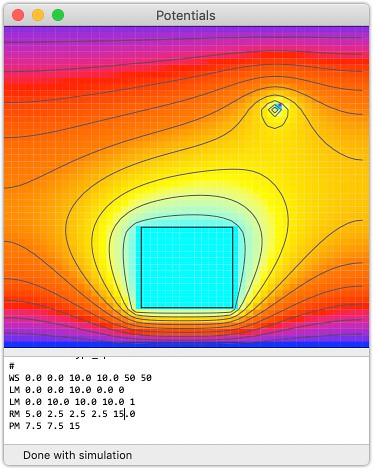Potentials – Smoother Contour Lines

Today at lunch, I was scanning the class notes on the Contour Lines I'd used in Potentials, and I was thinking that their solution of sub-dividing the grid ever smaller - until you get to the resolution of the display was nice, but that there was a better way - analog. Meaning, to ratio the value of the contour, and the relative values of the grid points. My notes were pretty simple:
And when we look at the previous work, it's clear where the nodes are, as it's crude, and not very smooth at all. But when we take the values from the data and then test them:
// grab the four corner values from the data vul = _values[r+1][c]; vur = _values[r+1][c+1]; vll = _values[r][c]; vlr = _values[r][c+1]; // now compute the in/out state of the four corners ul = (vul < value); ur = (vur < value); ll = (vll < value); lr = (vlr < value);
then the code for the individual line segments of the contour are simply:
// line from left to top sy = (value - vll)/(vul - vll); pbeg = NSMakePoint(x, y+dy*sy); sx = (value - vul)/(vur - vul); pend = NSMakePoint(x+dx*sx, y+dy);
where the effect of sx and sy are to modify the value from 0.5 in the previous version, which is half-way between nodes, to that percentage represented by the values of the nodes, and the contour. This makes a huge difference:
And it's just amazing how much nicer it looks. The code isn't doing anything that complex - it's just doing the work a little smarter... and that is just elegant.

